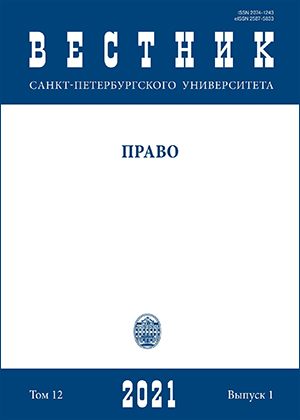Research on juvenile delinquency in modern Russia
DOI:
https://doi.org/10.21638/spbu14.2021.101Abstract
In this article, the developed matrix of criminologically significant information is proposed. This matrix reflects the content, structure, and methodology of the study of juvenile delinquency. The described criminological heptagonal matrix is a fairly complete structure of in formation significant for criminological science, which is implemented for the purpose of gaining the most in-depth knowledge of the modern features of juvenile delinquency. The interrelated elements of this matrix are also proposed in this work. Special attention is paid to the area of conducting, on a planned basis, criminological monitoring of juvenile delinquency. It is noted that criminological monitoring has previously been the subject of research by other authors. It is emphasized that conducting criminological monitoring of juvenile delinquency will allow for a “cross-cutting” study of this type of crime, and develop adequate, modern approaches to its prevention. The author provides the results of research on the attitude of citizens to the Internet space. A separate role is assigned to the theory of intersectionality (the theory of intersections of social spheres). The conclusion is substantiated that, based on the fact that the world of modern juveniles is structured, the application of this theory becomes an important element of cognition, study, and identification of the mutual influence of such social spheres as the real (offline) social sphere, virtual (online) social sphere with the identity of a juvenile.
Keywords:
prevention of juvenile delinquency, intersection theory, criminological monitoring, social environment, Internet space, information globalization, informatization, scientific and technological progress
Downloads
References
Downloads
Published
How to Cite
Issue
Section
License
Articles of "Vestnik of Saint Petersburg University. Law" are open access distributed under the terms of the License Agreement with Saint Petersburg State University, which permits to the authors unrestricted distribution and self-archiving free of charge.






